With thousands of islands to choose from, Europe has plenty of opportunities to escape the crowds and high prices of tourist magnets
Few things suggest summer more than an island escape, but the Crusoe lifestyle doesn’t always come cheap. According to travel search engine Kayak, which has a Budget Your Trip tool, the average cost of a week in crowd-pleasing Mykonos over July and August is now £3,196 per couple.
Popular European islands can also get stiflingly busy. The Balearics saw more than 2.5 million visitors last July alone. For context, the population of its biggest island, Mallorca, is less than 1m. In Croatia, the island-dotted Adriatic coast recorded more than 100 million overnight stays last year.
But there are plenty of European islands that have stayed under the radar, meaning tourist crowds are lighter and prices are lower. We’ve found seven options on the Continent and looked at data for availability and pricing to help you decide the best time to visit each this summer.
Serifos, Greece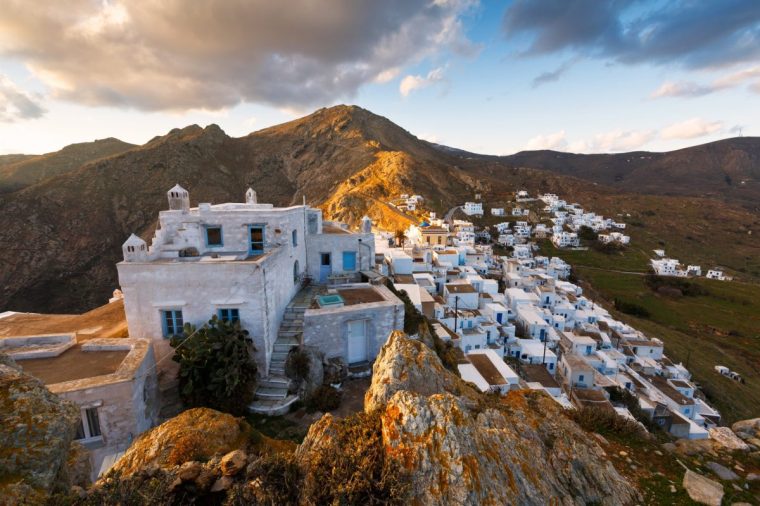 Chora village on Serifos island in Greece (Photo: Cavan Images/Cavan Images RF/Milan Gonda/Getty)
Chora village on Serifos island in Greece (Photo: Cavan Images/Cavan Images RF/Milan Gonda/Getty)
With boxy white buildings dotted down hillsides, blue-domed churches, and 19th-century windmills, Serifos looks like the lovechild of Mykonos and Santorini.
Yet, without an international airport to bump up prices and visitor numbers, the cost of a holiday here is nothing like that of many of its Cycladic neighbours.
On booking.com, 58 per cent of one to four-star hotels and apartments available in July and August were priced under £200 a night, compared to just nine per cent on Mykonos. Beachside Coralli resort near Livadi has doubles from £109 in August.
Ferries from Piraeus (Athens’ port city) to Serifos take two hours on the quickest routes and dock at Livadi, where a seaside promenade is lined with chatter-filled bars and tavernas.
The island’s capital, Chora, a short taxi ride uphill from the port, is a warren of whitewashed houses with blue shuttered windows, boutiques, tavernas and bars (don’t miss the rooftop terrace at Gaidaros). Chrysoloras Winery, a 25-minute drive from Chora, is another must. The sunsets here are as photogenic as Santorini’s but without the selfie sticks.
Data shows that demand for accommodation in Serifos peaks in the last week of July and the first three weeks of August, tailing off in September, creating a sweet spot for bookings just before the island’s tourist industry closes for the season.
Cres, Croatia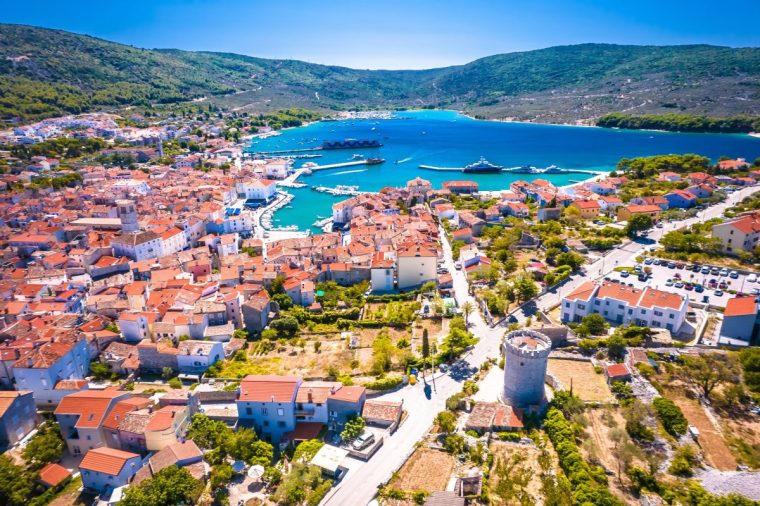 Cres tower and bay in Croatia (Photo: xbrchx/iStockphoto/Getty)
Cres tower and bay in Croatia (Photo: xbrchx/iStockphoto/Getty)
While attention from celebrities such as Beyoncé and Julia Roberts has hiked up prices on Croatian islands such as Hvar and Korcula over the years, Cres has remained comparatively out of the limelight, keeping costs in check.
According to Kayak, the average cost of a night’s stay (across all-star ratings) on the island in July and August is £136, compared to £199 in Hvar and £197 in Korcula. Rooms at the beachside Hotel Kimen are available from £132 a night in July, rising to £150 in August.
An 80-minute ferry ride from mainland Rijeka (one service a day in high season), Cres is an island of go-slow fishing villages, uncrowded beaches, oak forests, honey farms and hiking trails, some of which trace their way along original Roman roads. Its capital, Cres Town, meanwhile, hints at Dubrovnik with its medieval centre, red-roofed buildings and a port skewered with sailboat masts.
Demand for accommodation in Cres starts to peter out towards the last week of August, with the best availability to be found in September.
Glénan Islands, France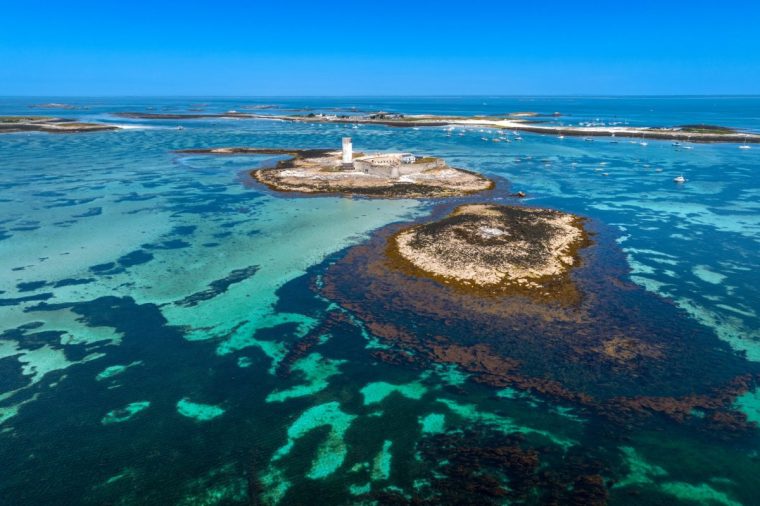 Tropical looking Glénan in Brittany (Photo: MathieuRivrin/Moment RF/Getty)
Tropical looking Glénan in Brittany (Photo: MathieuRivrin/Moment RF/Getty)
Barely bigger than dust motes on a world map, the seven islands of the Glénan archipelago are sprinkled nine miles off the coast of Brittany. With their choux-coloured beaches and piercing blue waters, they have a reputation for being the French Maldives.
As with their Indian Ocean counterparts, days here revolve around the sand and sea. Visitors can hire a kayak in Île Saint-Nicolas, where the ferries from mainland Bénodet and Concarneau dock, and paddle around the isles. Experienced divers can book scuba trips through CIP Glenan. Alternatively, smaller islands such as Île de Guiriden are prime picnic spots.
The best port from which to catch a boat to the archipelago is Concarneau, which is an hour’s drive from Brest Brittany airport (served from the UK by easyJet and Volotea) and two hours 45 minutes from St Malo ferry terminal.
Accommodation is limited, but when booked in good time, rooms at Sextant Sea Refuge can be reserved from €105 (£88.50) a night. At the time of writing, there was better availability in July than in August. Hotel rooms on the mainland, meanwhile, can be snapped up for around £100 a night.
Egadi Islands, Italy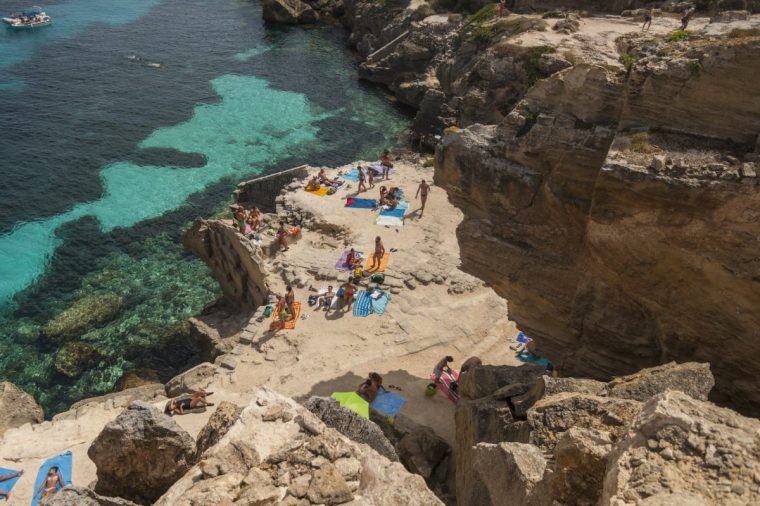 The rugged cliffs of the Egadi Islands (Photo: Maremagnum/Corbis Documentary RF/Getty)
The rugged cliffs of the Egadi Islands (Photo: Maremagnum/Corbis Documentary RF/Getty)
The Egadis form a constellation of five islands and islets just off the north-west coast of Sicily. On Favignana, the largest of the islands, hikes to hilltop castles and swims in siren-blue coves like the one at Cala Rossa can be complemented by visits to the limestone gardens, which are in disused quarries.
Marettimo is a place for boat tripping, hiking and long seafood lunches. On car-free Levanzo, meanwhile, unpeopled beaches and coastal walking trails await. Fast 30 to 40-minute ferries run between Trapani on Sicily’s west coast and Favignana daily in summer.
While hotels.com data reveals that the average cost of a night’s hotel stay (across all star categories) on the better-known Italian island of Capri is £466 in July and £531 in August, hotels such as the blue-and-white painted Plaia Resort in Favignana can be booked from £130 a night in the Egadis. July is a prime time for bookings, as prices can swell with the heat in August.
Leros, Greece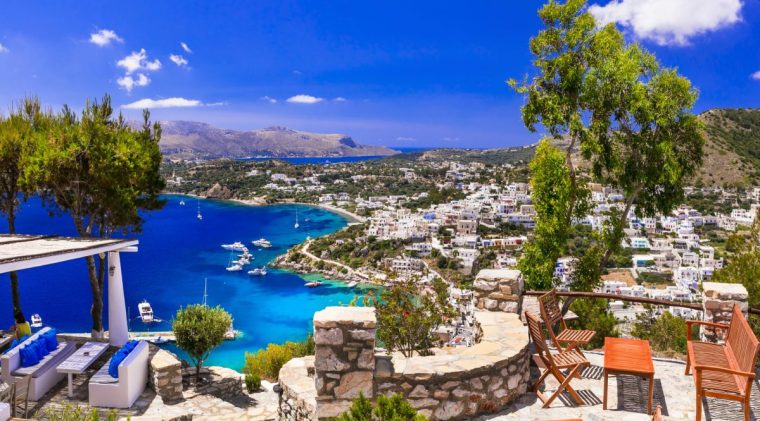 Leros island in the Dodecanese (Photo: Freeartist/iStockphoto/Getty)
Leros island in the Dodecanese (Photo: Freeartist/iStockphoto/Getty)
A 90-minute ferry hop from better-known Kos, Leros is a lazy-paced, undilutedly Greek island in the Dodecanese.
Highlights of a stay here include climbing the 500 steps from Agia Marina, where ferries dock, to the clifftop castle of Pandeli for views across the island, taking in the 18th-century windmills that stand to attention on the hillside above Panteli beach (one is now home to a cocktail bar called Harris), and tucking into bowls of baked feta and salted mackerel among tables of residents on Alinda Beach.
Don’t leave the island without sampling a Leros cheese pie. Typically made from pastry, feta and cinnamon, they can be picked up pre or post-ferry journey from Paradosiako bakery in Agia Marina.
Data from Kayak shows that the average cost of a night’s hotel stay on the island in July and August is £112, compared to £226 on Kos. Rooms at the beachside Alinda Hotel are available from £86 in July. Demand for accommodation peaks in mid-August, with better availability in late June, early July and September.
The Wadden Islands, Netherlands Ameland is the fourth inhabited Dutch Wadden Island (Photo: iStockphoto/Creative Nature/Getty)
Ameland is the fourth inhabited Dutch Wadden Island (Photo: iStockphoto/Creative Nature/Getty)
Five Wadden Islands lily-pad their way through the North Sea off the north-west coast of the Netherlands. Each one is belted by dune-backed beaches (Ameland’s is 27 kilometres long), dense with nature reserves and scored with cycling and walking trails – there are 140 kilometres of biking tracks on Texel alone. Activities include seal-spotting, mud flat walking, horse-riding and coast rafting (like the white-water version, but with waves, not rapids).
Evenings consist of lazy dinners in restaurants that showcase local produce such as Texel lamb.
Demand for accommodation in the Wadden Islands is uniformly high throughout summer. Yet the good choice of guesthouses and quality hostel and campsite accommodation keeps them an affordable option.
Data from price comparison site Hostelz suggests that the average cost of a private hostel room is £79 a night on Texel. A two-bedroom chalet at popular Duinpark & Camping De Robbenjager costs £169 per night in late July.
La Graciosa, Spain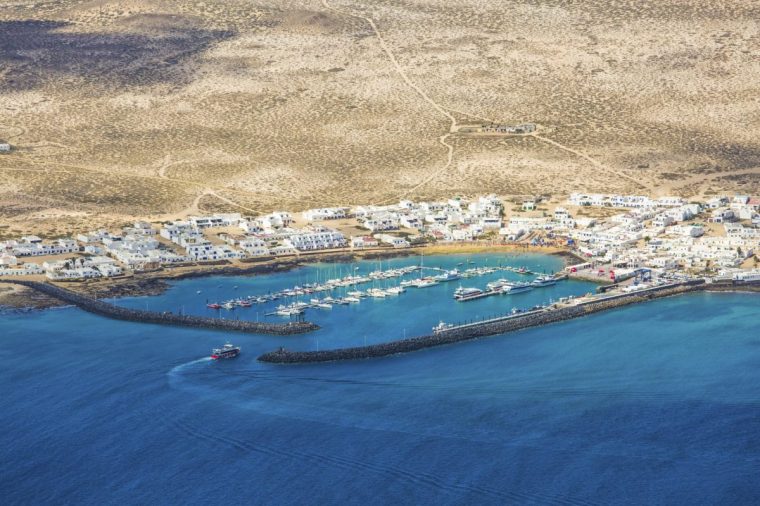 The village of Caleta del Sebo on La Graciosa island (Photo: David C Tomlinson/The Image Bank RF/Getty)
The village of Caleta del Sebo on La Graciosa island (Photo: David C Tomlinson/The Image Bank RF/Getty)
A 25-minute ferry ride from Órzola on the north coast of Lanzarote, La Graciosa is the incognito Canary.
Protected as a part of the Chinijo Archipelago Natural Park, it’s Tarmac and car-free (apart from a fleet of 4×4 taxis). The best way to get around is by mountain bike or on one of four hiking routes that lasso the island.
Caleta de Sebo, with its spill of single-storey whitewashed houses, is La Graciosa’s only town. There’s a clutch of bars and restaurants here that specialise in seafood caught by the fishermen who you’ll see mending nets on the quayside where ferries dock.
With less than 50 accommodation options across the island, demand is consistently high in summer. At the time of writing, availability was better in late June, when a stay on the moored two-bedroom boat Hermes in Caleta de Sebo costs from £84 a night. A studio stay at the sea view Loft La Caletilla apartments, meanwhile, is available from £215 in late June. Data reveals that the average cost of a night’s stay in Lanzarote is £221 and in Tenerife, £220.
Holmöarna, Sweden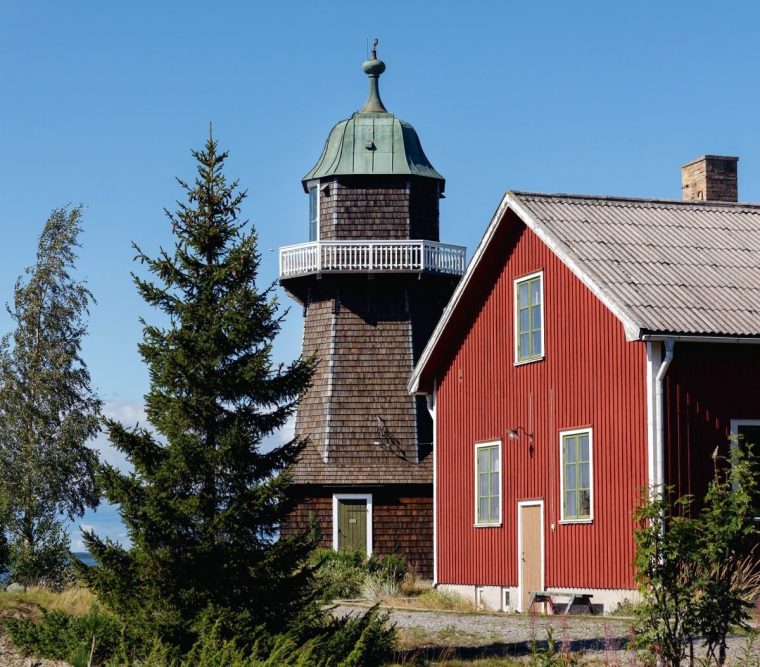 Traditional buildings on Holmöarna island (Photo: Amanda Sveed)
Traditional buildings on Holmöarna island (Photo: Amanda Sveed)
The off-radar islands of Holmöarna freckle the Gulf of Bothnia around 30 miles from Umeå, on Sweden’s east coast. Umeå is connected to Stockholm by domestic flights as well as high-speed (six hours) and sleeper trains.
From there, it’s a 30 to 40 minutes drive to the port of Norrfjärden, from where free, 45-minute ferries depart to Byviken on Holmön. Known as Sweden’s sunniest island, Holmön is the largest in the archipelago, although it is still dinky compared to some of the country’s better-known islands, with a single restaurant and a sole general store.
Cycling (pick up a bike from the boat museum), hiking and sunset-watching at spots like Bergudden lighthouse, make up the to-do list here. There’s also a 30-minute boat trip to neighbouring Stora Fjäderägg, an island nature reserve home to a summer hostel, seals and birds.
While dorm beds are available in a restored lighthouse and 19th-century rectory from £80 a night, it’s also possible to stay on the Holmöarna islands for free. Islanders have restored rustic fishing cottages that are free of charge. Some are available on a first-come, first-served basis and can’t be booked, others, such as Sikskärs, can be booked a week in advance. A map of them is available on the Visit Holmon website.
